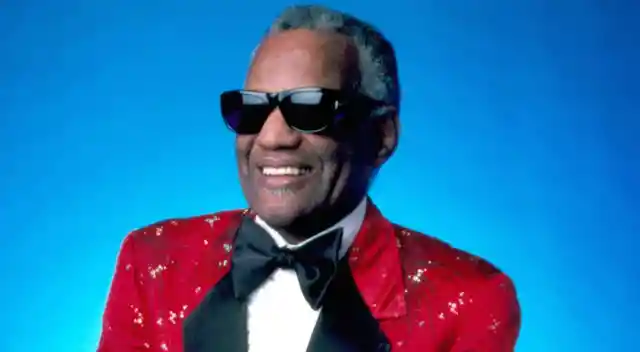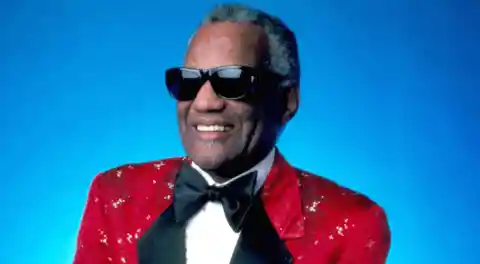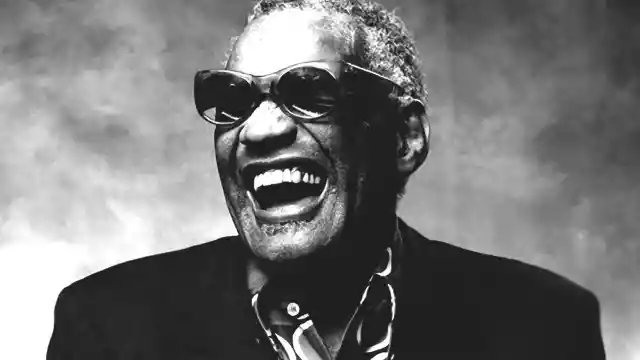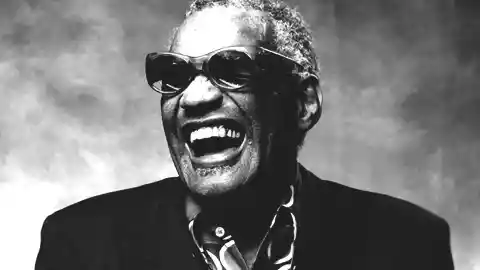

By combining blues and gospel, soul dates back to the early ’50s. Soul came out of the church; in fact, many of the soul singers got their start in church choirs. Over the years, we’ve seen many incarnations of soul music including, Neo-soul, psychedelic soul and southern soul. Janis Joplin and Dusty Springfield flirted with soul, which lead to a new genre called blue-eyed soul, and Joe Cocker, Michael McDonald and Van Morrison all followed in their footsteps. For this top ten, I will only be listing the masters, originators and innovators of soul. And don’t get hung up on the sequence as any of these ten artists could be number one.
Number Ten: Sam Cooke. Often called “The King of Soul,” Sam Cooke had the ability to melt your heart with just one note. Born in Mississippi to a Baptist minister, his influence was rooted in gospel. By the time he turned 14, he was the lead singer in a group called the Highway QC’s. Then in 1950, Cooke joined the gospel group, The Soul Stirrers, and managed to secure a record deal. While the group would rely heavily on traditional gospel songs, Cooke managed to write a few originals.
Sam Cooke received mainstream success with the song “Lovable” in 1956. He then scored a hit with “Send Me,” which had crossover appeal as it spent six weeks at number one on Billboard’s R&B chart and three weeks on the pop charts. Wanting complete artistic freedom, Cooke formed his own label in 1961 titled SAR Records. The hits kept coming including “Chain Gang,” “Cupid,” and “Twistin’ the Night Away.” In total, Cooke would go on to have thirty top 40 singles and thirteen albums. Sadly, we lost the gifted singer-songwriter to a gunshot in 1964. While he died at 33, he left a legacy, and many singers would follow in his footsteps.
Number Nine: Otis Redding. Otis Redding is still considered one of the greatest singers of all time and is credited with the Stax sound. His powerful voice was exemplified with his equally powerful stage presence. Born to a gospel singer and part time preacher, he was destined to be a singer. He first hit the charts with the single, “These Arms of Mine,” and a full length album followed. Pain in My Heart was released in 1964. Comprised of half covers and half originals, the album was like a who’s who of musicians as Isaac Hayes, Booker T. Jones, and Steve Cropper all lent a helpful hand. The record did fairly well as it peaked at number 20 on Billboards Top 100 and 85 on the R&B charts.
Redding would only release six albums, often using the incredible Memphis Horn section; each one produced hits such as “I’ve Been Loving You Too Long,” “Mr. Pitiful,” and “Try a Little Tenderness.” He gained wide crossover appeal in 1967 as he wowed the audience at the Monterey Pop Festival. Backed by Booker T & The M.G.’s, Redding had the crowd on their feet with such songs as “Shake,” Respect,” and the Stones’ number, “Satisfaction.” Later that same year, Redding and Cropper penned what would become his most recognizable song ever – “(Sittin’ On) the Dock of the Bay.” While he would not live to see it become a hit, it remains one of his most enduring songs. Otis Redding died in a plane crash in December of 1967.
Number Eight: Aretha Franklin. She’s not nicknamed the “Queen of Soul” for nothing. As one of the first divas, Aretha Franklin has carved out one of the most successful careers in soul music history. Like so many, she got her start singing in the choir in Minister Franklin’s church. In 1960, Franklin signed with Columbia Records. While she had some success with “Won’t Be Long” and “Operation Heartbreak,” she moved to Atlantic Records in 1967 where she pumped out hits such as “Respect” and “Think.” With the changing of labels, she was sent to Muscle Shoals to record I Never Loved a Man ( The Way I Love You) in front of the famed Muscle Shoals Rhythm Section. The album spawned three hits: the title track, “You Make Me Feel Like a Natural Woman” and “Baby I Love You.”
The ’70s would find her with more top 40 hits including “Spanish Harlem,” “Angel,” and “I’m In Love.” The 1980’s saw a resurgence in Franklin’s career as Who’s Zoomin’ Who? was her first platinum album, thanks to the track, “Sisters are Doing it For Themselves,” as it featured a duo with the Eurythmics. To date, she has had twenty number one hit on the R&B charts, won 18 Grammy Awards, has charted 118 times on Billboard. She was also inducted into the Rock and Roll Hall of Fame.
Number Seven: Marvin Gaye. Dubbed the Prince of Motown, Marvin Gaye had a string of hits dating back to the early ’60s. With an extra smooth delivery, Gaye first charted with “Stubborn Kind of Fellow,” but that was just the beginning. He would chart again with “Can I Get a Witness.” After teaming up with singer Mary Wells, the duo would chart with such songs as “Once Upon a Time” and “What’s the Matter With You Baby.” Gaye then scored another solo hit with “(How Sweet it is) To Be Loved By You.”
Duets with Kim Weston and Tammi Terrell gave him even more success with hits as “Ain’t Nothin’ Like the Real Thing,” “Ain’t No Mountain High,” and “Your Precious Love.” In 1968, Gaye scored his first number one with “I Heard it Through the Grapevine.” After witnessing the police brutality with the anti-war movement in Berkeley, he felt it was time to speak out. What’s Going On was released in 1971, despite objections from Berry Gordy and was praised by critics and fans as it featured two chart toppers, “Mercy Mercy Me” and “Inner City Blues.”
Marvin proved that he was a bankable commodity and signed a one million dollar contract with Motown. With the release of Let’s Get it On in 1973, it was further proof for Motown as it sold over three million copies and stayed on the charts for two years. However, later on the hits became harder to come by, and Gaye was heavily into drug addiction. He reprised his career in 1982 with the release of Midnight Love, which contained the song, “Sexual Healing.” The song became Gaye’s biggest selling hit of all time. It also won the singer two Grammy awards. Sadly, we lost the gifted singer to a gunshot inflicted by his father in 1984.
Number Six: James Brown. The Godfather of Soul, James Brown, was a master performer and has said to be an influence on Michael Jackson. With his signature moves, Brown left crowds stunned and amazed. Originally, he was a part of the group The Fabulous Flames, but with only one hit, “Please Please Please” and the suggestion from their manager that they change their name to James Brown and the Fabulous Flames, the band walked away. Success came quick as the single, “Try Me,” hit the R&B charts at number one. Now fronting the revamped Flames as well as the James Brown band, he scored another hit with “(Do the) Mashed Potatoes” in 1959. They would find even more commercial success with hits such as “Think” and “I’ll Go Crazy.”
Brown scored his first top forty hit with the instrumental, “Night Train,” and from there on out, the hits seemed like they would never end. Brown hit his stride in 1962 with his Live at the Apollo disc, which went on to chart at number two and remained on the charts for 14 months. The album went on to sell a million copies. Subsequent records such as “Prisoner of Love,” “Out of Sight,” “I Got You,” ” It’s a Man’s World,” and “Papas Got a Brand New Bag” resulted in a Grammy award. Although he was giving us a variation of soul music, Funk, audiences were enthralled with the dynamic performer, and he would leave the 1960s on top. However, the 1970s to the 1980s saw a decline in record sales, and with disco on the horizon, his career never quite recovered. James Brown died of heart failure in 2003, but he would inspire generations to come.
Number Five: Stevie Wonder. As a gifted songwriter/singer/composer/producer, Stevie Wonder signed to Motown at the tender age of 11, and since that time, he has given us a multitude of work. From 1968 to 1970, Wonder charted no less than four times with songs such as “Signed, Sealed, Delivered, I’m Yours,” “For Once in My Life,” and “Uptight (Everything’s Alright).” As the decade changed, so did Wonder as he was now writing in a more prolific style. He had two number one hits from the album, Talking Book: “Superstition” and “You Are the Sunshine of My Life.” The two songs would take home three Grammy awards.
On a roll of creativity, he released Innervisions, which also had Grammys written all over it as it contained the tunes, “Livin’ For The City” and “Higher Ground.” And the hits as well as the Grammy awards kept coming for him. Fulfillingness First Finale was issued in 1974, which housed the hits, “Boogie on Reggae Woman” and “You Haven’t Done Nothin,” which again took home three Grammys. Then came his masterpiece; Songs In the Key of Life was issued in 1976 and entered the charts at number one. It contained such number one hits as “Isn’t She Lovely,” “I Wish,” and “Sir Duke.” He would go on to collaborate with such artists as Dionne Warwick, Paul McCartney, Elton John, Bruce Springsteen and Barbara Streisand. To date, Stevie Wonder has won 25 Grammy Awards, sold over a hundred million records, and has been inducted into the Songwriters and the Rock and Roll Hall of Fame.
Number Four: Etta James. While Etta James had been slotted into the blues genre, I personally always found her sound more rooted in soul. Her debut, At Last! consisted of soul, blues, R&B, and jazz. The single, “At Last,” was released in 1961 and became her signature song. With an orchestra backdrop, the song had crossover appeal and was inducted into the Grammy Hall of Fame in 1999. Later that same year, Etta released The Second Time Around, which spawned two hits, “Fool That I Am” and “Don’t Cry Baby.”
Although she was able to chart with a couple more singles, her career would slump for a couple of years. In 1967 she released Tell Mama, which included the singles “Tell Mama,” a rendition of the Otis Redding song, “Security,” and “I’d Rather Go Blind,” which Rod Stewart and a host of others would record. Throughout the the late ’60s and early ’70s, she would continue her reign with hits, but drug and alcohol addictions would sideline her. In 1978, she left Çhess and would not record for 10 years.
The late ’80s found James in a rock ‘n roll mood as she signed with Island Records and released Seven Year Itch. The disc touched on rock, funk and blues. She continued in the vain on her 1989 release of Stickin’ to My Guns. In 1993, she recorded the Grammy award-winning Mystery Lady: Songs of Billie Holiday. She would continue to release records and was a welcomed guest at all jazz and blues festivals worldwide. She won six Grammy awards, was inducted into the Rock and Roll Hall of Fame, the Rockabilly Hall of Fame and both the Blues and Grammy Hałl of Fame. We lost her in 2012, but her influence can still be recognized to this day.
Number Three: Al Green. Al Green has been dubbed “The Last of the Great Soul Singers,” and for a good reason as his unusual vocal style has been emulated for decades. Success came quick as he recorded Green is Blues to fair success. His follow-up, Al Green Gets Next To You, went on to sell a half million copies, thanks to the single, “Tired of Being Alone,” and would be certified gold. His next release would make him a star. Let’s Stay Together was released in 1972, and the title track was a monster as it reached number one on Billboard’s top 100 and the R&B charts.
Capitalizing on the success, Green offered up I’m Still in Love With You, which went platinum, and Call Me was equally as impressive as it gave the singer three more hits: “You Ought to Be With Me,” “Call Me (Come Back Home),” and “Here I Am (Come and Take Me).” Green would go on to chart singles and sell albums until the late ’70s before he turned his attention to gospel music. However, this didn’t mark an end to his career as his gospel debut, The Lord Will Make a Way, resulted in a Grammy award.
His collaborations with the likes of Annie Lennox, Ann Nesby, Queen Latifah, and John Legend have kept Green in the public eye, producing some hit records. Green was always a religious man, and it’s no surprise that he turned his back on a music career to become a full time pastor. To date, Al Green has been inducted into the Rock and Roll Hall of Fame, the Song Writers Hałl of Fame, the Gospel Music Hall of Fame, was honored with a Lifetime Achievement Award from the BET, won eight Grammys and was honored by the Kennedy Center.
Number Two: Gladys Knight. Often referred to as “Empress of Soul,” Gladys Knight has had an amazing career, and she’s still doing it at the age of 70. She began her career as the front woman of the singing quartet, the Pips, who would find success in the early ’60s and ’70s. The group signed to Motown in 1966 and began rolling out the hits including, “Friendship Train,” ” If I Were Your Woman,” and scored a Grammy for “Neither One of Us Wants To Be the First to Say Goodbye.”
After leaving Motown and signing to Buddha Records, their success would grow even further as they snapped a Grammy for “Midnight Train to Georgia” and had such celebrated hits as “You’re the Best Thing That’s Ever Happened To Me.” By the time the late 1970s rolled around, the group were on their last legs, resulting in a solo effort by Knight. Signing with Columbia brought the band back together, but not for long. In 1987, Knight decided she wanted to go solo. During her career, she has released nine solo albums, including her latest, Where My Heart Belongs, which returns her to her gospel roots. Gladys Knight and the Pips were inducted into both the Georgia Music and the Rock and Roll Hall of Fame.
Number One: Ray Charles. Possibly one of the most famous soul singers of all time, Ray Charles defined the genre. Often referred to as “The Genius,” Charles enjoyed a seven-decade run. While he enjoyed moderate success in the late ’40s and early ’50s, when he signed to Atlantic, his life would never be the same. Charles’ first hit came in 1953 with “Mess Around” followed by “It Should Have Been Me” and “Don’t You Know.” Charles wanted to record his own music, and with the song, “I Got a Woman,” he not only got his wish, but also got his first number one.
The hits kept coming with the likes of “Drown in My Own Tears” and “The Night Time (Is the Right Time).” Charles still sang and played R&B, but would record instrumental jazz records on the side. He would gain crossover success with “What’d I Say,” and after his contract with Atlantic was up, a bidding war started with other labels. Charles chose ABC Paramount Records as they gave him everything he desired, including higher royalties, a $50,000 annual advance, and ownership of his masters. Now that business was taken care of, it was time to make some hits, and he scored one with “Georgia On My Mind.” For this achievement he was bestowed a Grammy award.
Subsequent albums would receive similar reactions as the Genius worked his magic through the late 1950s until the mid 1960s. With the onslaught of psychedelic music in 1967, Charles found it hard to compete for radio time. It wasn’t until the 80s that he would return to the spotlight after signing to Columbia and recording a batch of country records. Joining him on this venture were some of the biggest in the business including George Jones, Chet Atkins and Hank Williams Jr. The next three decades would find Charles reinventing himself for a younger generation as he kept on recording and touring. He was the recipient of the Kennedy Center honors, was inducted into the Rock and Roll Hall of Fame, and was awarded the Grammy Lifetime Achievement Award just to name a few.

